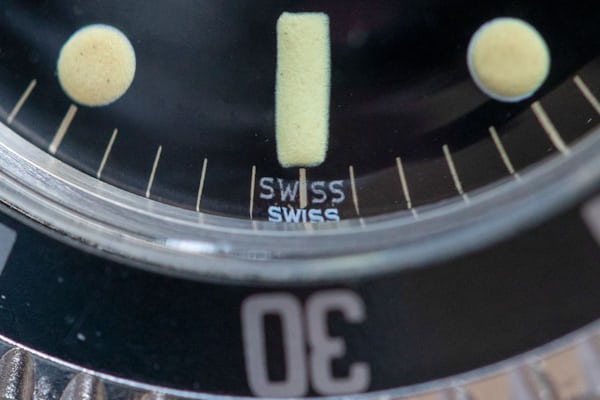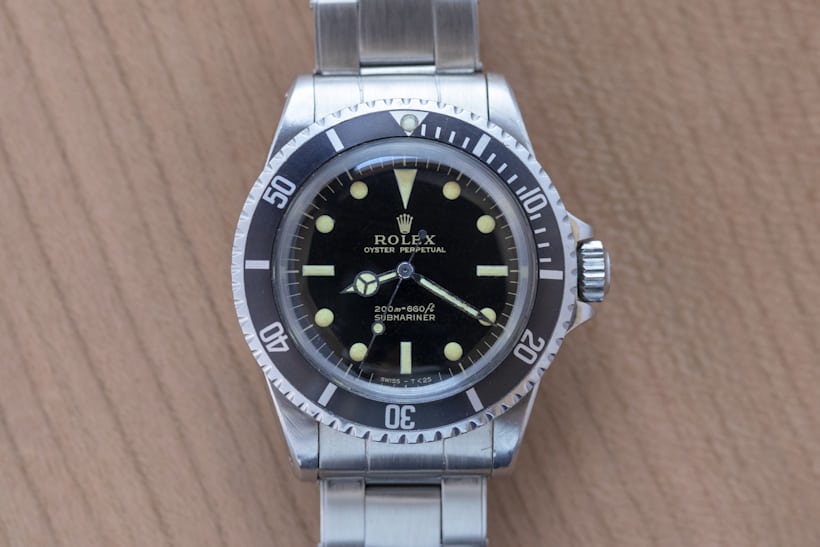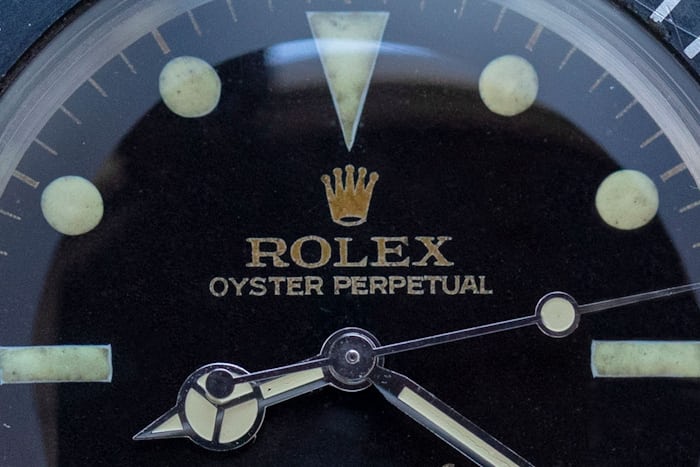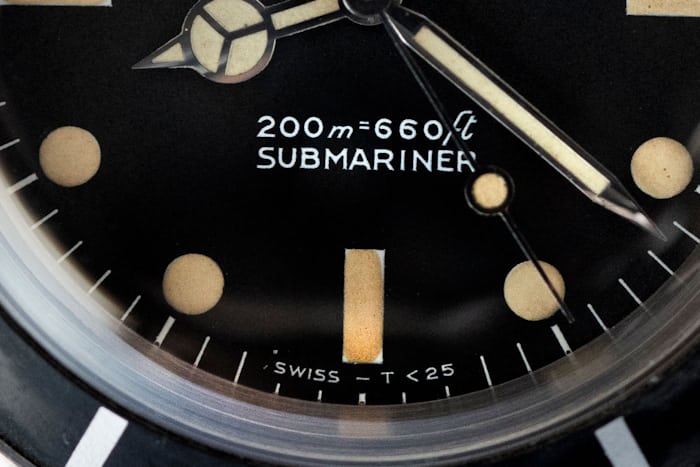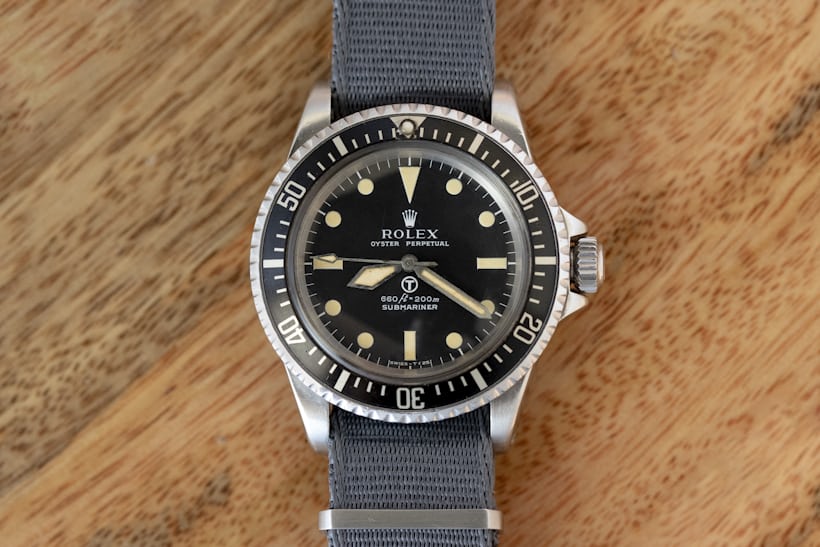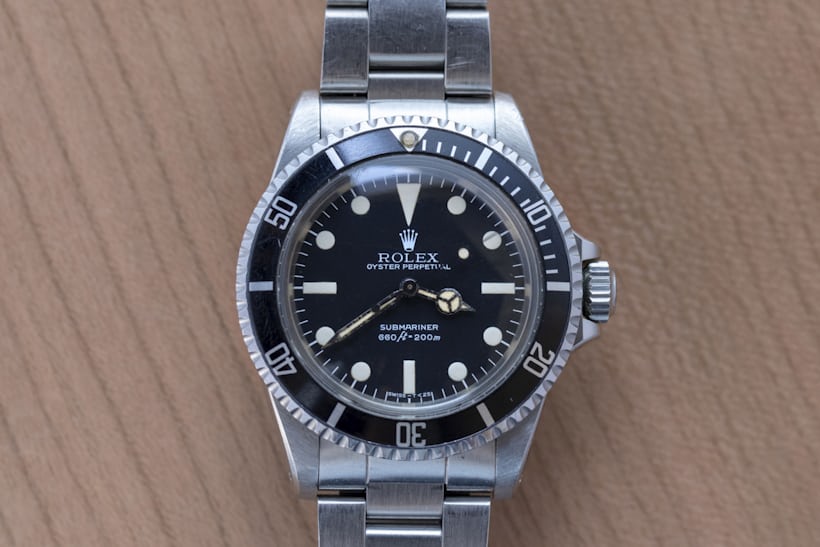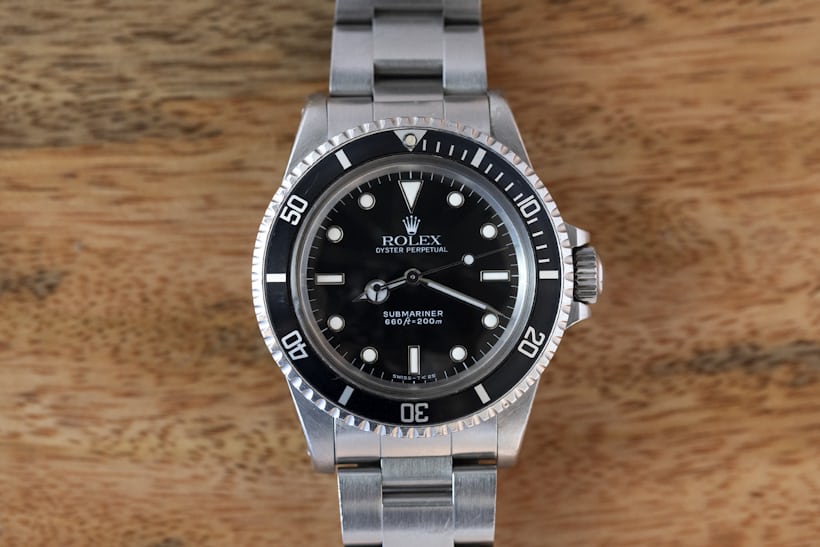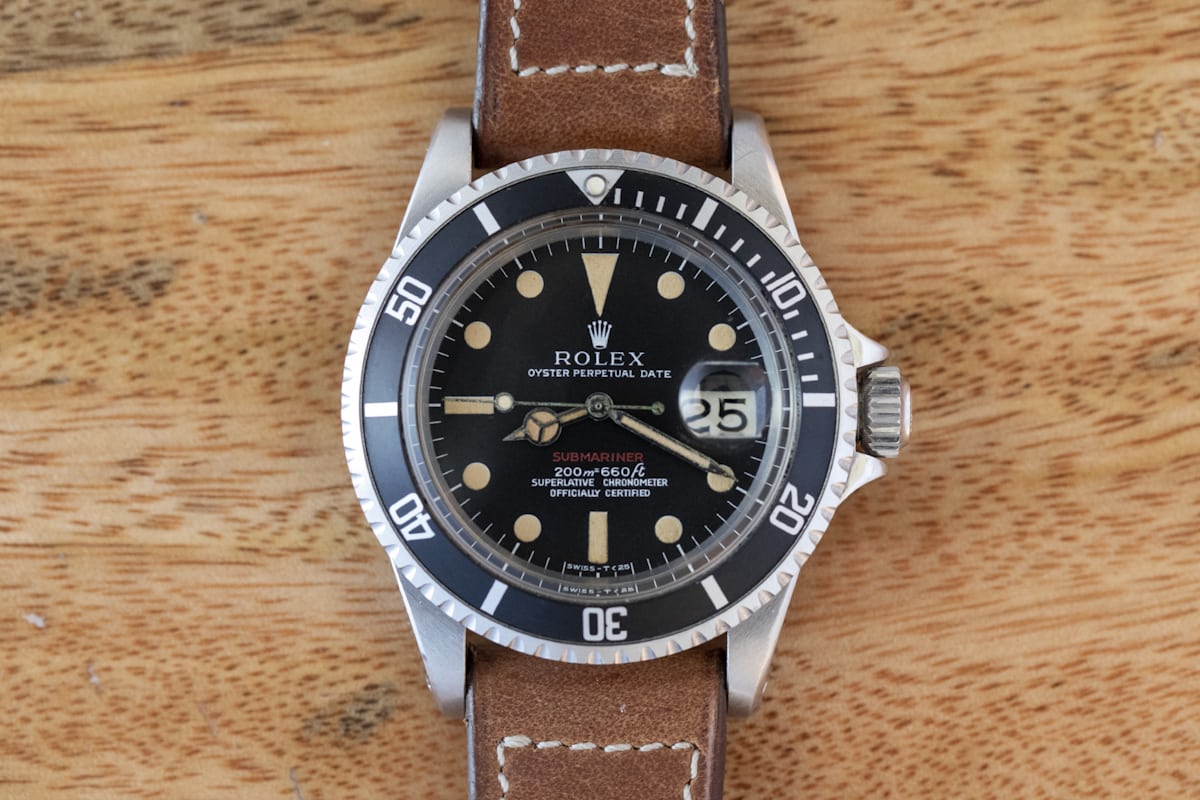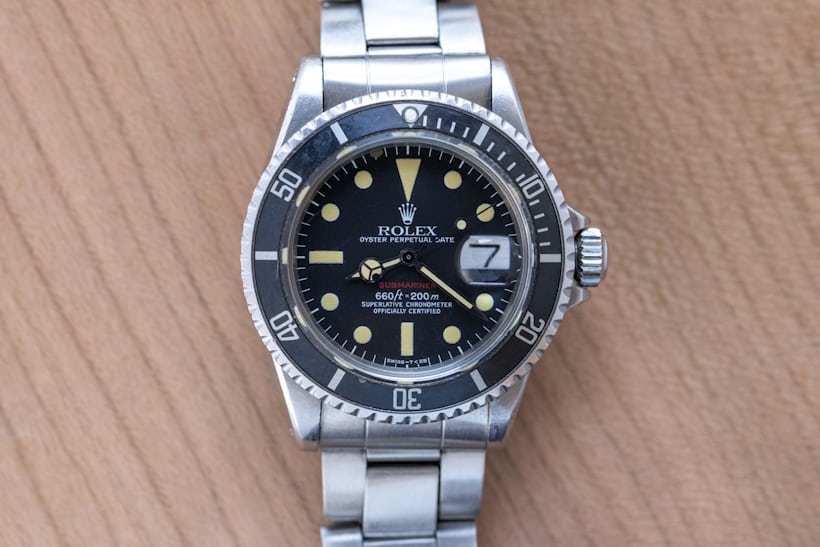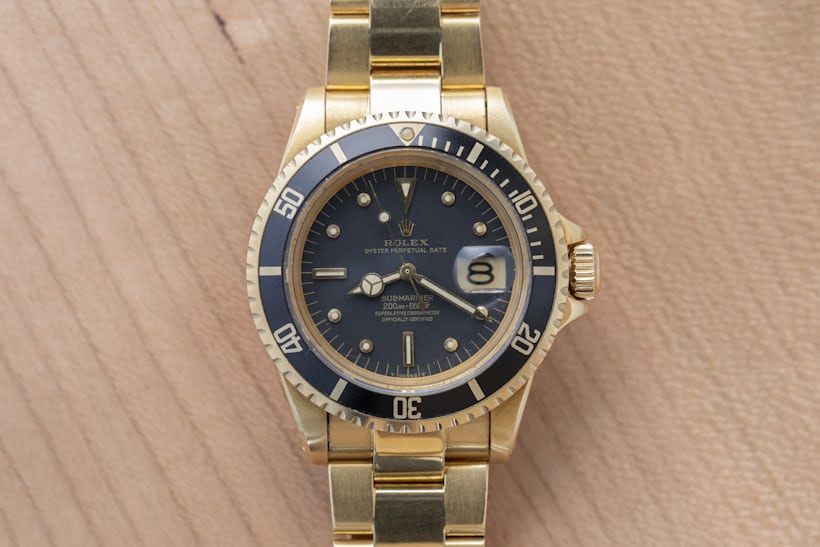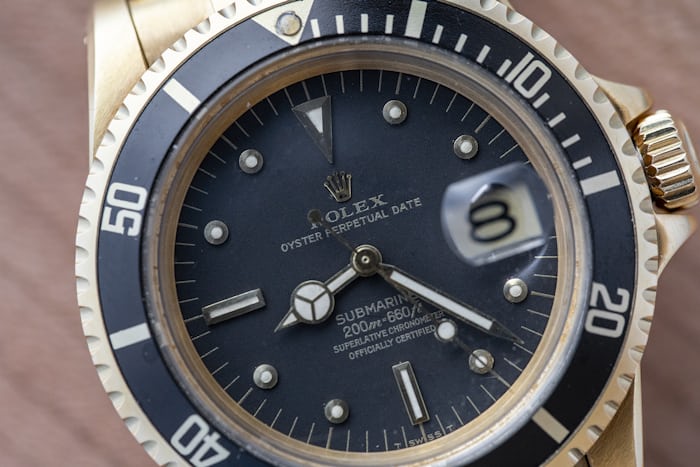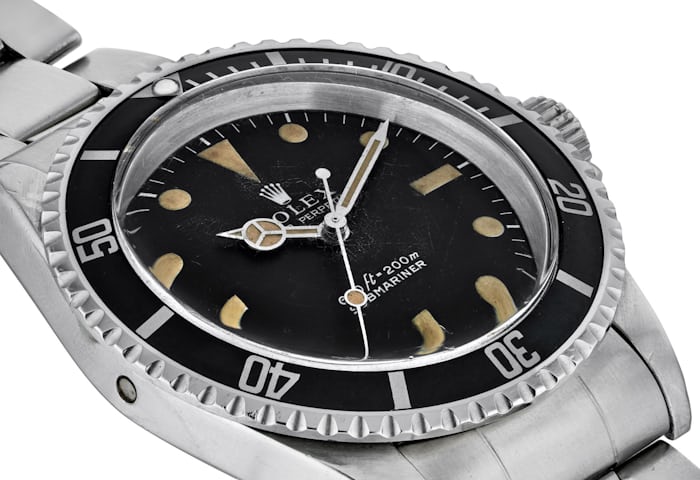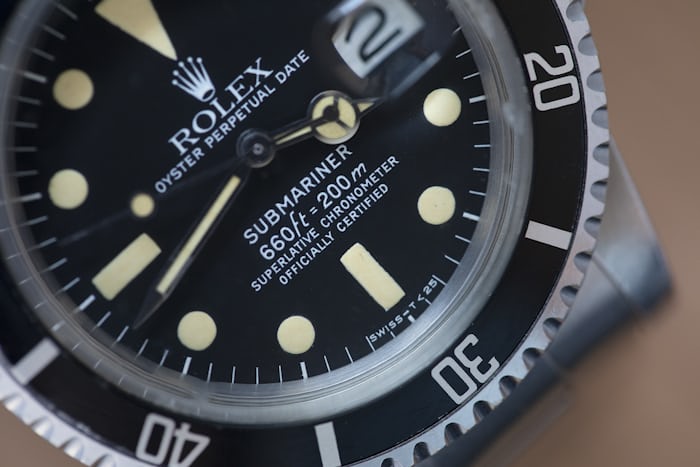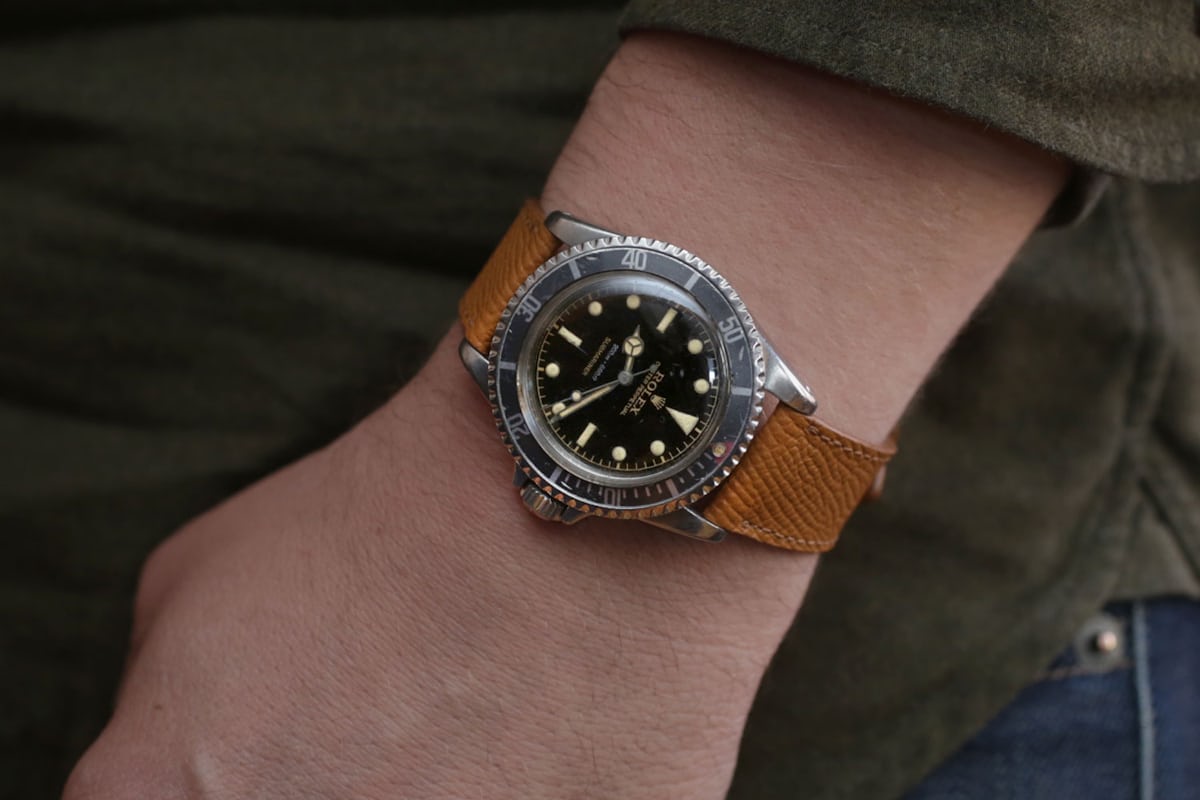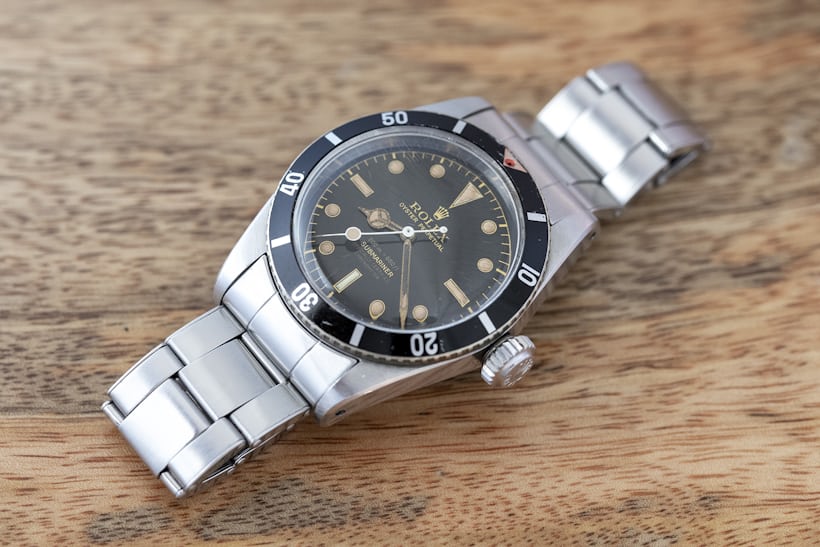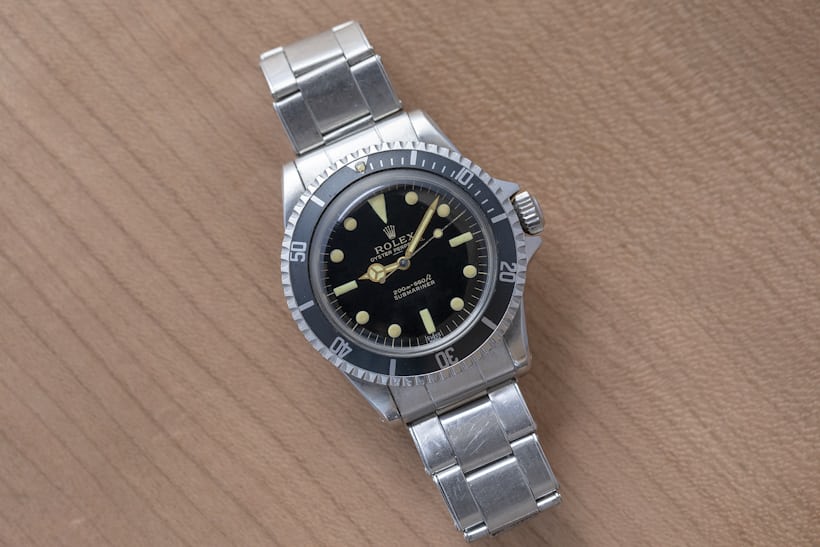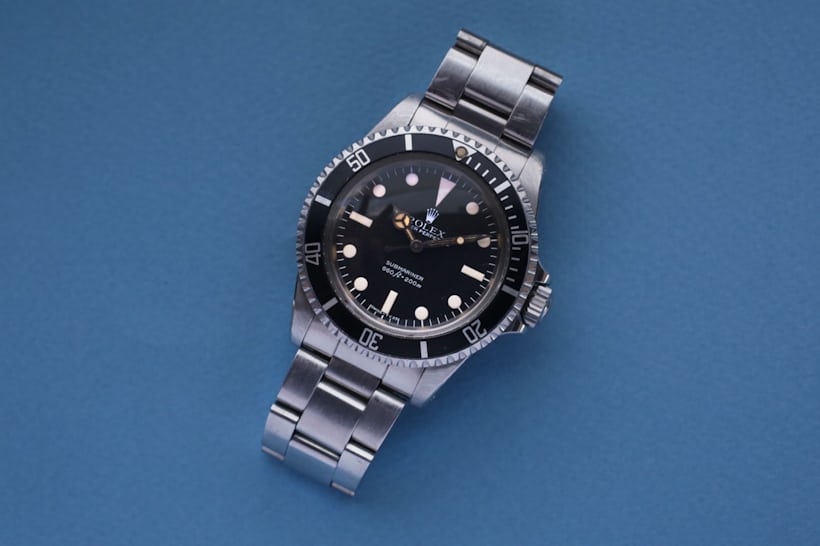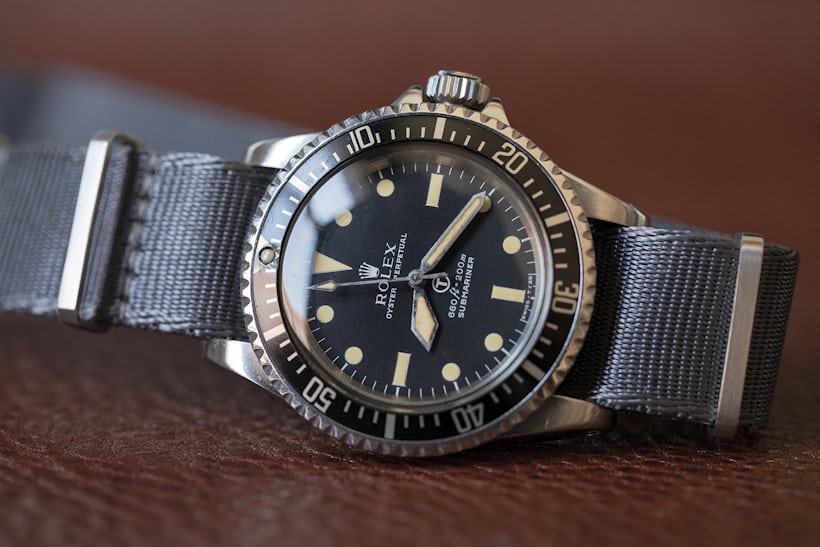Reference Points: Understanding The Rolex Submariner
We go as deep as you can on the most legendary watch of all time.
Reference Points was dreamed up as our way of offering definitive guides to the world’s most important watches, giving collectors a place to look for accurate, comprehensive information presented in a digestible way. Going all the way back to the first installment in 2014, it has consistently been one of our most requested features, while also being one of the most time-intensive to produce. The resources required to gather together dozens of exceptional watches, to partner with leading experts in the collecting community, and to properly document decades of history are extraordinary. As a result, we’re extremely proud to present Reference Points for the Rolex Submariner.
A silly question that we get asked quite a bit here at HODINKEE is, “What is the best watch?” Sure, I get why people ask it and what they’re getting at, but it’s impossible to say anything is “the best” when you’re dealing with something as subjective and personal as wristwatches. What you like aesthetically, the history that’s meaningful to you personally, and the idiosyncrasies of how you live your life all impact that answer of that question. However, there’s a similar question that we also get asked a lot, for which I do think there are a few good answers: “What is the most important watch of all time?” The Rolex Submariner is a pretty darn good answer. It’s not the only answer, but it’s one that I find tough to argue with.
Since its introduction in 1953, the Rolex Submariner has in many ways defined not only the dive watch category, but the sport watch category more broadly. When you say “wristwatch” I think a large percentage of people picture something similar to a Rolex Submariner in their heads, whether they know why or not. The Sub has been worn by world luminaries, icons of the silver screen, sports legends, and basically any other set of noteworthy people you can name. The very notion of a black-dialed stainless steel watch with a rotating timing bezel, luminous hands, and a comfortable bracelet was broadly popularized by the Submariner.
Despite all of that though, the Submariner is an often-misunderstood watch. There have been well over a dozen distinct references of the Submariner, with up to a few hundred total variants depending on how thinly you want to start sub-dividing individual references based on dial text, lume plots, and more. We thought it was about time that we break things down and make the whole range of Submariners a little easier to understand. As you’d expect though, we had to set some boundaries for ourselves: We are only covering vintage Submariners here, starting with the first proper 1953 Submariner and working our way up through the last of the classic ref. 5513 Submariner. All of the watches here have four-digit reference numbers and acrylic crystals. Once we get into five-digit reference numbers, sapphire crystals, and other technical innovations, we get into squarely modern watches, which are a tale for another time.
To make this all possible, we teamed up with Eric Wind, longtime HODINKEE collaborator and founder of Wind Vintage, who tapped deep into the vintage Rolex collector community to drum up more than three dozen truly world class watches for us to shoot and study.
The Genesis Of The Submariner
As we noted in Reference Points: Understanding The Rolex Sea-Dweller, the Rolex Submariner was among the very first dive watches on the market and it quickly became the most iconic. The Sub represents a sort of inflection point for Rolex as a company and how it would go on to become what it is today. Prior to the 1950s, Rolex was making mostly watches that today we’d describe as dress watches or all-purpose watches of one kind or another. Bubblebacks, two-register chronographs, and Datejusts were the brand’s core offerings. Yes, these included important innovations like the waterproof Oyster case and the so-called “perpetual” automatic movements, but they weren’t proper sport watches as we’d recognize them today.
All of that started to change as the ’40s tuned into the ’50s. The earliest Rolex Explorer models made their way to the summit of Everest (you can see the original right here, in fact) and the brand began experimenting with a new kind of design language that would come to dominate its offerings over the next decade. White and silver dials turned to black, lume plots got much bigger and started standing in for applied hour markers, cases started to get a bit beefier, and rotating bezels became the norm. Combinations of these traits would result in the Explorer, the GMT-Master, the Milgauss, and more.
The year 1953 would turn out to be a huge year for Rolex. It was that year that the unusual ref. 6202 Turn-O-Graph, the Explorer (in a few references), and the ref. 6204 Submariner all debuted. The first of those is very closely tied to the Submariner, though a bit smaller and slimmer, with a flat or honeycomb dial and sleek hands, though it still has that now-familiar look and feel. This trio of watches would kick off the era of Rolex design that today we most closely associate with the brand and its iconic status. They were sport watches with refined design elements and a cohesive language that spoke to finding simple solutions to complex problems. They were, in many ways, the very best kind of tool watches from the get-go.
So, without further ado, here is a rundown of every Rolex Submariner reference from the very first through to the start of the modern era. Take a deep breath. Let’s go.
This is it: The very first watch to say “Submariner” on the dial. Typical literature will tell you that the Submariner was first launched in 1954, but that’s just when Rolex officially announced the watch and started marketing it. These earliest pieces are actually dated to late 1953 by serial number and the stamp on the inside caseback, with the earliest pieces showing “II.53” production timing.
Looking at the reference 6204, you can clearly tell that the watch is a Submariner, but a number of the key traits are slightly different. First off, the case is still relatively thin compared to later models. Combined with the very small 5.3mm crown, this watch is believed to have been water resistant to 100 meters, though there is one known early advertisement out there that claims a 200m depth rating. There’s also the bezel, which is a bit bolder in style, without smaller graduations between zero and 15. You’ll also notice that the gilt dial is much more sparse and that instead of the Mercedes hand set we have extremely slim pencil-shaped hands and a seconds hand with a small lollipop at the tip.
These early 6204s were powered by the Rolex caliber A260, which was repurposed from earlier Oyster Perpetual models, including a number of later bubblebacks. It was the most robust automatic movement Rolex had at the time, with built in shock protection, making it the right fit for the fledgeling Submariner.
If you’re looking to pick up a watch like this yourself, it’s best to consult with a true expert first. There are all kind of little variations and quirks that you’ll want to make sure are kosher before you initiate that bank transfer, and this is still very much from the Wild West era of the Submariner, where documentation is scarce and misinformation plentiful.
There are two main dial variations for the 6204: the earliest examples by serial number have a “split logo” that typically has “Oyster” and “Perpetual” spaced further apart (some with the typical flat dial and some with honeycomb textured dials) and the more typical version you see here that has “Oyster Perpetual” placed together below Rolex like we see on Submariners today. There is also a very unusual version that says “Sub-Aqua” instead of “Submariner” that was produced for the British market, but these are exceedingly rare. One other thing to look out for is the texture of the non-honeycomb dials – despite being from the age of glossy, gilt dials, these 6204 dials tend to get a matte, mottled finish. If you see one that’s too shiny, it’s probably too good to be true.
Reference 6205 (Clean Dial & Pencil Hands): 1954
Wait, did we just go backward? This watch doesn’t say “Submariner” on it anywhere, but it does in fact come after the reference 6204 with “Submariner” at six o’clock. Being the opaque black box that it is, we don’t know why Rolex decided to briefly remove the signature text from the dial in early 1954, but they did, and the result is this so-called “clean dial” Sub. The only two lines of text on the dial are the Rolex signature and “Oyster Perpetual” underneath, but otherwise it’s very similar to the gilt chapter ring dial of the 6204. The hands are also similar, retaining the pencil-and-lollipop configuration. This is the last Submariner to not feature the Mercedes hands.
Two important changes you want to make sure to notice are the case and the crown: The former is a bit thicker and the latter was upsized from 5.3mm to 6mm. There’s no increased water resistance yet, but the idea was to make the watch a bit more rugged and the crown a bit easier to manipulate (those tiny 5.3mm crowns are fiddly to say the least). As far as dial variations go, they’re very similar to those of the 6204, except for this “clean dial” which is unique to this reference.
Reference 6205 (Signature & Mercedes Hands): 1954
While this is the same reference as the watch directly above, it’s starting to look a lot more like Submariners that you see all over. The word “Submariner” is back on the dial at six o’clock and finally we’ve got the distinctive Mercedes hour hand and a seconds hand with a straight tip after the lollipop. One thing to note about those hands though is how long they are. They’re much longer than what you’ll see in a bit on 5512s and 5513s, with the shaft between the central point of the dial and the Mercedes part of the hour hand being longer and the minute hand reaching all the way out to the chapter ring. If you see shorter hands, you know they’re a later set from service or funny business.
You’ll notice that the 6205 has the same no-hash bezel as the 6204. Sometimes you’ll see these fitted with bezels with the red triangle at 12 o’clock at 0/60 and the hash marks from that point until 15. These are later additions and not correct for this watch, since the red triangle and hash marks didn’t appear until later. Another thing to look for with these is whether or not the bezel itself (not just the insert) is period-correct, with the coin-edge instead of the larger knurling – otherwise it could be an outright swap.
Reference 6200 (Explorer Dial): 1955-1956
Now things start to get really wild. This watch came two years after the 6204 but has a lower reference number. Why? Nobody really knows. The best guess is that it was in development earlier but Rolex decided to hold it for some reason. But any other guess you have is probably just as solid, if we’re being honest.
The 6200 is one of the all-time great Submariner references and one that the most serious collectors get very excited about. It’s often called the “King Sub” by those in the community. It was the first Submariner to use the 8mm “big crown” with the “Brevet” signature on the outside. It also introduced a new dial to the mix, the Explorer Dial, so-called because of the 3-6-9 markers that connect it to that other famous Rolex model. We’re still well before the days of depth ratings and chronometer certifications, so these dials have an open, clean look to them that we wouldn’t really see again on future Submariners. This puts all the focus on those big Arabic numerals, which, rendered in radium, certainly stand out.
The case on the 6200 is a bit thicker and broader than those found on earlier models too. Combined with the larger crown, this offered double the water resistance (200 meters) of earlier models. Within the 6200 reference, there are two main variations, one with the small logo (above) and one with the large logo (below). The former does not say “Submariner” at six o’clock, while the latter does. Both versions have the familiar extended Mercedes hands and no-hash bezel from earlier references.
You can see just how massive a difference the size of the logo detail makes in terms of the overall feel of the watch. There are no exact numbers on how many of each were produced, but it’s thought that the total number is somewhere around 300, with many more large logos produced than small logos. However, because the reference is so rare to begin with and examples in good condition are even more elusive, there’s not a substantial difference in price between the two logo variants, with condition and originality playing a much more important role.
While it’s certainly not the most important thing about the ref. 6200, it’s worth noting that it got a new caliber as well, the A296. In terms of technical features, the movement was pretty similar to the A260 caliber, but it was a bit larger at 29.5mm (instead of 26.4mm), making it a better fit inside the larger big crown case.
Reference 6536/1 (Earliest Version): 1956-1957
Now we’re getting into the weeds. Up until now, most of the Submariner references have been relatively straightforward, with a few little differences here and there. With many of the references from 1956 forward being produced for multiple years, the differences and variations increase and the minutiae becomes much more important for collectors today.
The earliest reference 6536 examples were actually “double reference” models with the 6538 (which we’ll get to in a minute), where they had the smaller 6mm crown instead of the 8mm crown, with the 6538 crossed out by lines on the case and case back, with 6536 engraved below that. Only a small number were made before they got their own dedicated case and reference, the 6536/1.
For the ref. 6536/1, there are three main generations we want to highlight. Up first is the earliest version of this watch. Production started in 1956, overlapping a bit with production of the 6200. But this is a very different watch in many ways. First off, it’s only rated to 100 meters and features the smaller 6mm crown and the slightly slimmer case of the 6205. This is also the first instance we have of a “four-line” Submariner dial, which says “Rolex / Oyster Perpetual” at 12 o’clock and “100m = 330ft / Submariner” at six o’clock. The dial itself is still gilt, with ample radium lume plots and a chapter ring. The no-hash bezel is also still present, but the hands have started to evolve – we’ve got a set of Mercedes hands with a shorter hour hand and a bright white seconds hand that was supposed to increase legibility.
With the 6536/1, Rolex also finally moved away from the bubbleback calibers, instead fitting the Submariner with slimmer movements. Interestingly, the caliber 1030 that powers the 6536/1 dates back to 1950, the very same year as the A260 and A296, and can be found in a number of Oyster Perpetual and Explorer models as well, including the famous ref. 6610. It’s a 2.5 Hz (18,000 vph) movement that measures just 5.85mm thick, allowing for a caseback that sat closer to the case profile without giving up the automatic winding rotor.
Reference 6536/1 (Intermediate Version): 1957
The middle version of the 6536/1 is extremely similar to the first, but with two key differences: the bezel and the seconds hand. This is the first time we see a Submariner with the famous red triangle at the 0/60 position, something we’ll go on to see in later models as well. Additionally, the lume plot in the white seconds hand is a bit smaller this time around. Some people call the former a “lollipop” seconds hand to differentiate, despite there still being a pointed tip at the end of the larger lume plot.
One thing to note is that if you look at these first two 6536/1s side by side, you get a great sense of just how much variation there can be watch to watch when it comes to vintage Submariners. The dials presumably started out mostly the same colors and finishes, but over the decades they’ve faded differently and the printing starts to appear different. In this case, both dials are exactly as they should be, despite looking very, very different.
Reference 6536/1 (Final Version): 1957-1958
The reference 6536/1 culminated in the watch you see here, made just two years after the first 6536/1s rolled out to retailers. Again, we’re talking small differences here from version two to version three. Most notably, the bezel has again morphed, this time adding the hash marks between the 0/60 position and the 15 minute mark. Also, for the watches with this later bezel, you’ll want to make sure the watch has the proper handset: the white seconds hand is gone, in favor of one in brass that matches the other two hands (the lume plot is even smaller too, incidentally).
While this watch has a red triangle in the bezel, there were 6536/1s with hash bezels and no red triangle too. You can see one that has lived a heck of a life in Jason Heaton’s report right here.
To further complicate matters, at the same time Rolex was producing the “small crown” reference. 6536, it was also producing the “big crown” reference 6538. For a lot of people, this is the Rolex Submariner. It’s the watch that Sean Connery famously wore as James Bond in Dr. No (1962) and it’s got that beefy tool watch feel while still oozing vintage charm.
The 6538 came in two basic flavors, those with four lines of text at six o’clock and those with two lines of text in that position. We’ll talk about the former first (which is the watch you see above). In addition to the “Rolex / Oyster Perpetual” signature at 12 o’clock you’ll find four lines reading “200m=660ft / Submariner / Officially Certified / Chronometer” at six o’clock. This is the first Submariner to feature the chronometer certification on the dial, and you’ll notice the complexity of the color scheme on the gilt chapter ring dial – the model branding is all in gold while the other text is in a white/silver color.
The 8mm Brevet crown, no-hash bezel with red triangle, and broader case all contribute to this watch’s serious wrist presence. If you’ve never had the opportunity to try one of these early, big crown Subs on your wrist, try to find a collector or dealer with one who will let you give it a shot. It’s a totally different feel to the smaller Submariners or those with crown guards, but it’s also visually very different from the 6200 because of all the additional dial text. I remember the first time I ever saw one of these in the metal it total blew my mind – it’s easy to understand why this became such a classic.
Reference 6538 (Two Line): 1956-1959
While four-line 6538s were chronometer certified, there were also some watches of the exact same reference that were not. On these non-certified watches, you’ll find a simplified dial, without the chronometer certification in the six o’clock position. The result is a watch that has a slightly more open dial with some additional breathing room. The example above has faded to a beautiful dark shade of tropical brown, while the example below is still inky black – again, these watches were born identical but have become extremely different in their 60+ years of life.
A good rule of thumb: If there is no chronometer certification on the dial itself, the watch is almost certainly not COSC-certified. But, as with all things vintage Rolex, there are some exceptions.
While the dials of later 6538 examples are a bit more open, the bezels got a bit of extra detailing in the form of the hash marks from the 0/60 position to 15. These also have the red triangle at 12 o’clock, which we see intermittently throughout the first seven or eight years of the Submariner’s life.
Similarly to its smaller cousin, the 6536, there are multiple different hand sets that are correct for two-line 6538s. They can have either the slimmer white seconds had or the slim brass seconds hand – this is in contrast to the four-line 6538, which, in theory, should always have a large white seconds hand if it’s in true original condition.
Reference 5510 (The Last Big Crown Reference): 1958
The reference 5510 represents the end of an era. This is the very last Submariner to use an 8mm big crown. As you can see, it was produced concurrently with a number of the references above, which is part of why this era in Submariner history is so complicated. You really have to look at old advertisements from the period, authorized dealer materials, etc. to see what was in market when and what it would have looked like in new, original condition.
If you’re looking at this and saying “Wait, that looks just like the last two-line 6538 you showed me up above!” you’re not going crazy. The key traits – the big crown, the hash bezel with red triangle, the smaller Mercedes hand set – are all the same. When I asked a few dealers and collectors how to distinguish the two, they almost unanimously said “You just look between the lugs for the engraved reference number.” Easy enough.
The 5510 was also the first Submariner to use the significantly more modern caliber 1530 movement. This was a movement first introduced in 1957 and slowly implemented throughout the Rolex line-up. The movement itself evolved over its lifespan, so though it was used in 5510, 5508, and 5512 models for some time, it also changed throughout its lifespan. When first implemented it was a 17-jewel movement, though eventually 24 and 25 jewel versions were made too. Likewise, the shape and size of the winding rotor and the colored teflon gear coatings changed a bit too.
Reference 5508: 1958-1962
You’re probably sensing a trend right now. While the 6538 had its small crown cousin the the 6536/1, the 5510 has its own more diminutive relation in the 5508. This watch has the slimmer 100m-water-resistant case and crown, while evolving the design language of the 6536/1. We have a more consistent, low-key Mercedes handset right from the start and dials that exhibit exceptional balance in terms of how the markers and typography are laid out.
Two things did evolve though over the five years of 5508 production. The first is the bezel, which transitioned from a red triangle bezel to a silver triangle bezel (always with the hashes though). The second is the luminous material used on the dials. In the early 1960s, people started to become aware of just how dangerous radium paint was for both watchmakers and customers, and in 1963 Rolex would fully transition over to tritium lume on all of its future watches (until synthetic materials became available in the 1990s). But the 5508s produced in the early 1960s often show a lighter color of luminous compound that uses a lower concentration of radium. You can easily see the different in the two watches above, with the first being an early example and the second a very late one.
There’s one more critical point to make about the 5508: It’s the very last Submariner made to feature a case with no crown guards on the right side of the case. After 1962, all Submariners would feature the signature protectors on either side of the crown, giving the watch a slightly bulkier profile while making it a more robust tool. Remember, we’re still very much in the heyday of dive watches being actual dive tools, so designers were less worried about how the watch would look behind the wheel of your 911 and much more concerned about how it would perform underwater.
Reference 5512 (Square Crown Guard): 1959
The introduction of the reference 5512 in 1959 marked the moment that the Rolex Submariner became more or less the watch we know today. The 5512 has the approximately 40mm wide case, with its beveled lugs, crown guards, and slightly larger 7mm crown, the hashmarked dive bezel, the restrained dial with text at 12 and six o’clock, the 200m depth rating, and the standard Mercedes hands. It’s all there.
However, the reference 5512 would end up being produced continuously for over 20 years, from 1959 through 1980, and there are dozens of variations (more if you ask some collectors). Here we’re going to walk through many of the most important versions of the 5512, especially those that include structural changes to the watch or have important historic tie-ins. What we’re not going to do is get into every variation of serifs in the Rolex font or start giving funny nicknames to different coronet logos. That’s another thing for another time.
This very first 5512 is something of a transitional watch, taking us from the no-crown-guards Subs through to the more contemporary crown-guards Subs. Like its predecessors it has a beautiful gilt dial and a hashmark bezel with a red triangle at 12 o’clock. And then there are those crown guards. These are unlike any that we’ll find on later watches, with the ends totally squared off. When you look at the watch in profile it’s extremely striking and you can sort of tell that Rolex was still working through exactly how to design these. While they offer ample protection in this form, they make it a bit hard to access the crown for setting the time.
Reference 5512 (Eagle Beak Crown Guards): 1959
During this period, Rolex was constantly iterating on its products. While this had the end result of making the watches better on a consistent basis, it makes tracing the history a bit complicated. After realizing that the square crown guards could be refined, Rolex reshaped them to what collectors today call “eagle beak” crown guards because of how they taper down to their final point. It’s thought that these might have been made by shaving down cases with square crown guards, allowing Rolex to quickly change what they were doing without requiring a whole new manufacturing process.
Now, if you’re like me, you’re probably wondering if someone could just take a square crown guards 5512 today and shave it down to this shape if they wanted to replicated the effect. The short answer is yes, they probably could. But, square crown guards are much rarer and more valuable, so there’s little incentive for anyone to be deceitful in that way. If it were the reverse, we very well might have a problem on our hands.
Reference 5512 (Pointed Crown Guards): 1959-1963
At this point, we’re still dealing with classic, gilt dial 5512 Submariners. The crown guards continue to change though, and here we have a “PCG” or “pointed crown guards” 5512. If you look at just the crown guards, you’ll notice a straighter profile on these when compared to the eagle beak crown guards above. This shape cannot be derived from the square shaped guards, showing us that Rolex retooled and was making new cases in this shape from the start. After approximately four years of production, the gilt dial 5512 would end up with the rounded crown guards that the majority of Subs feature (and that you can see on the matte 5512s and gilt 5513s below).
Get More Articles Like This in Your Inbox
We're constantly creating great content like this. So, why not get it delivered directly to your inbox? By subscribing you agree to our Privacy Policy but you can unsubscribe at any time.





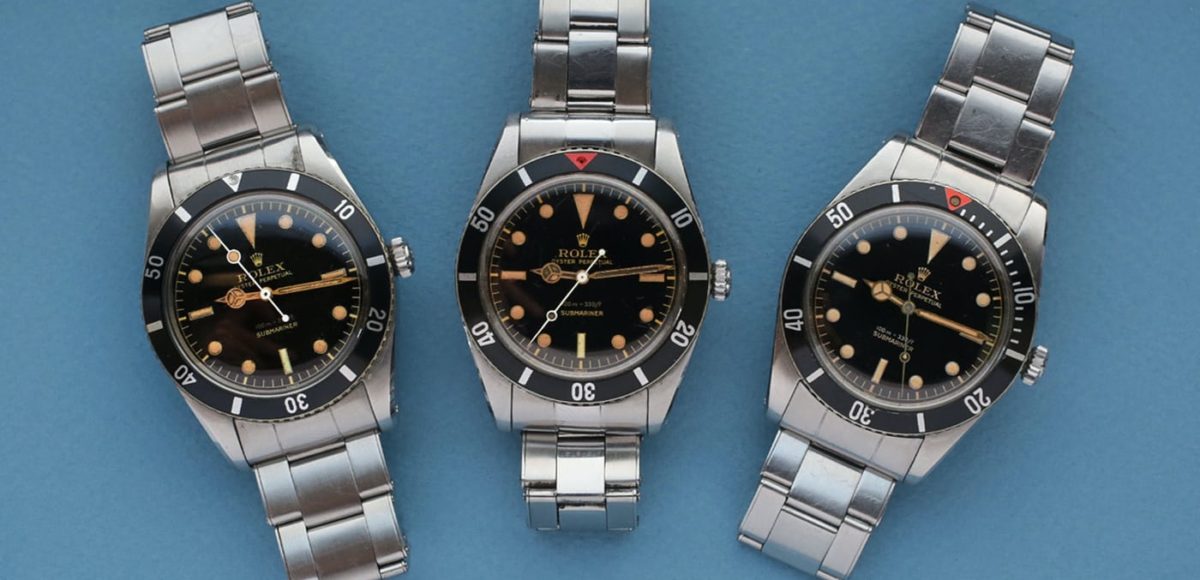
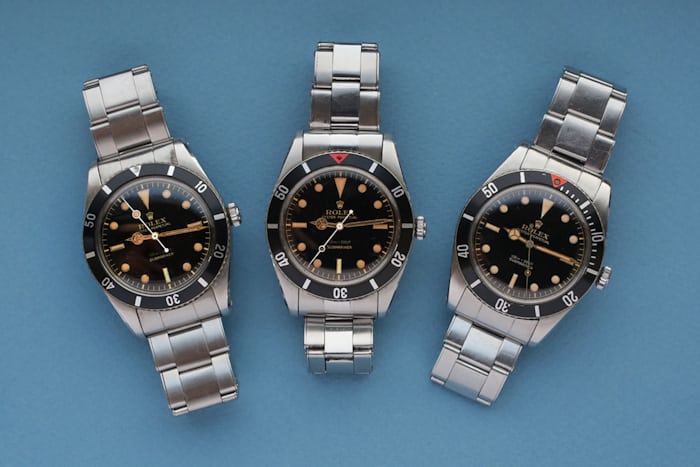
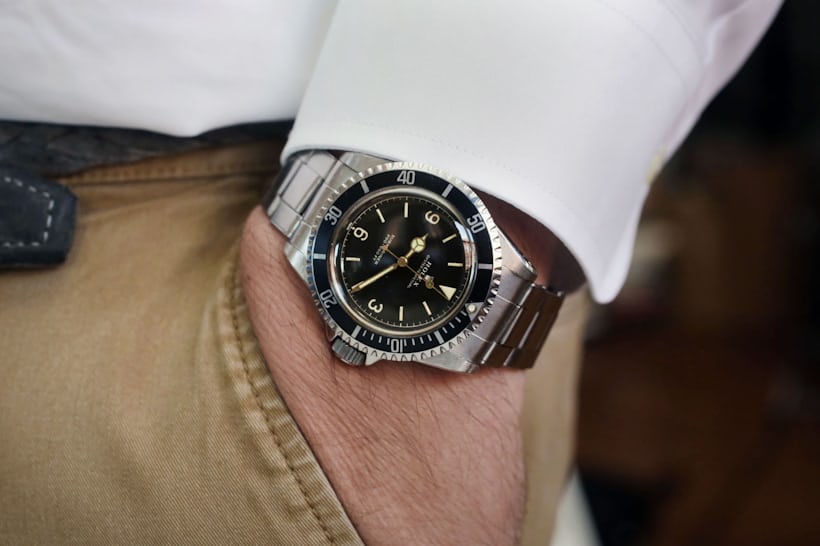
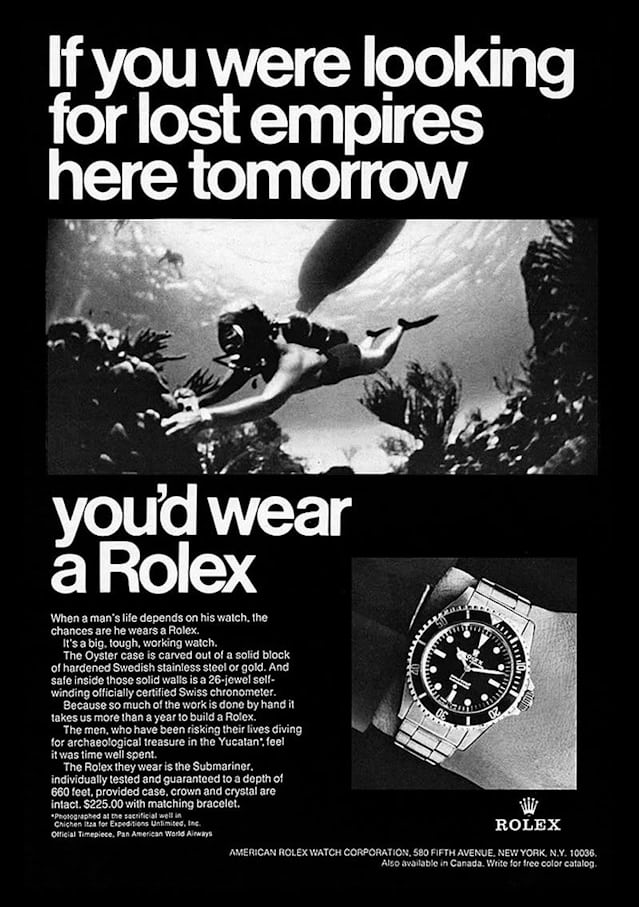
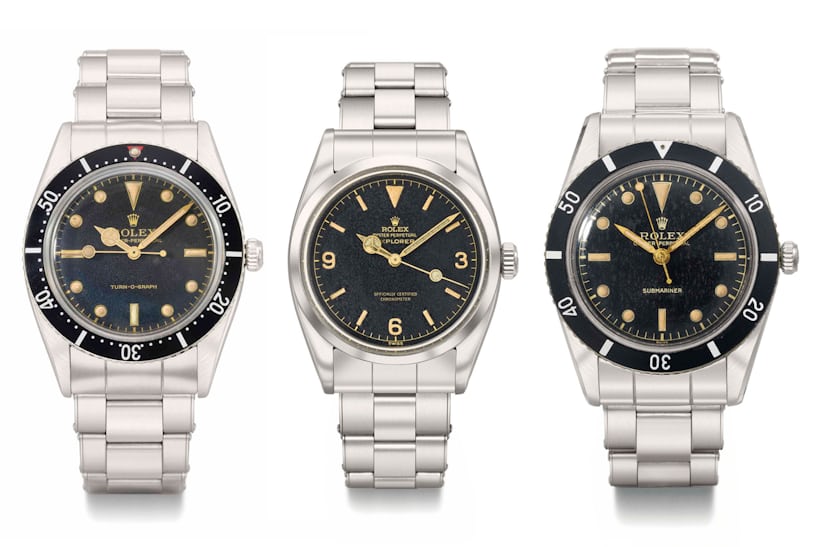
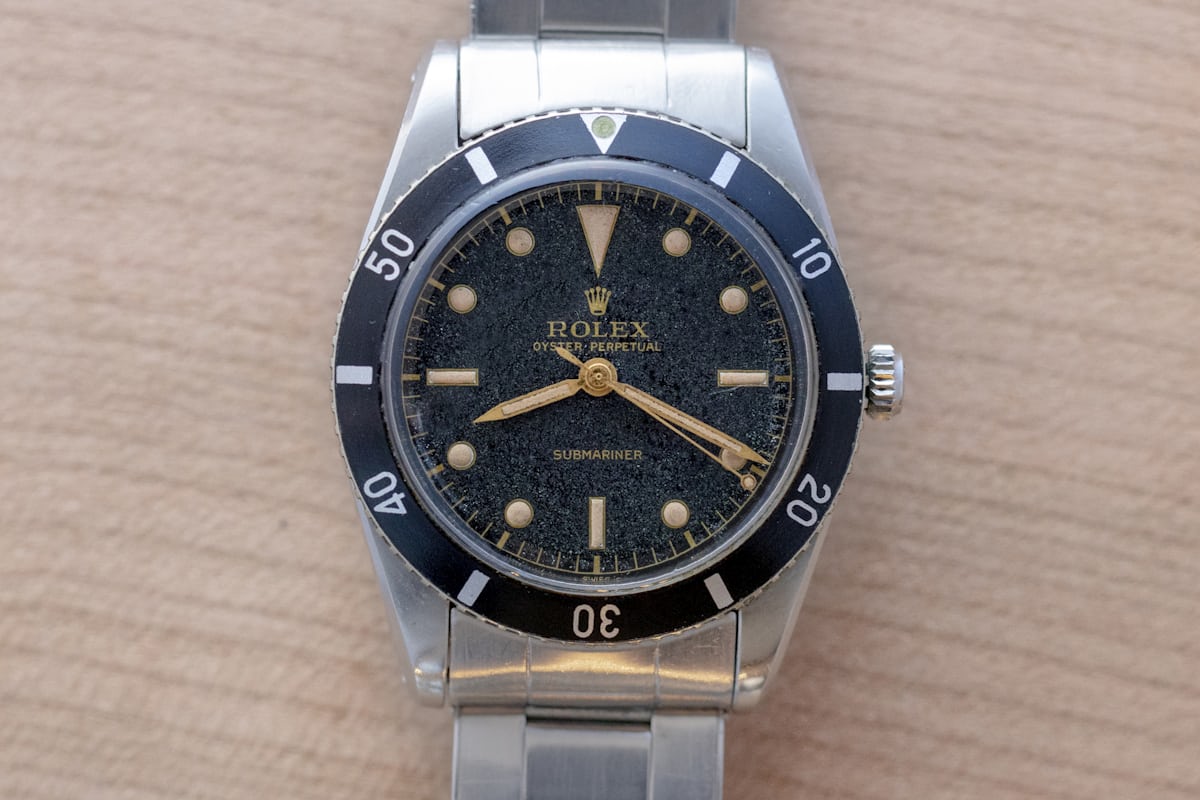
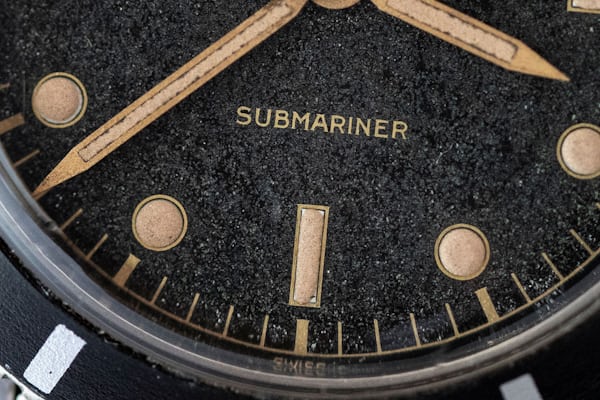
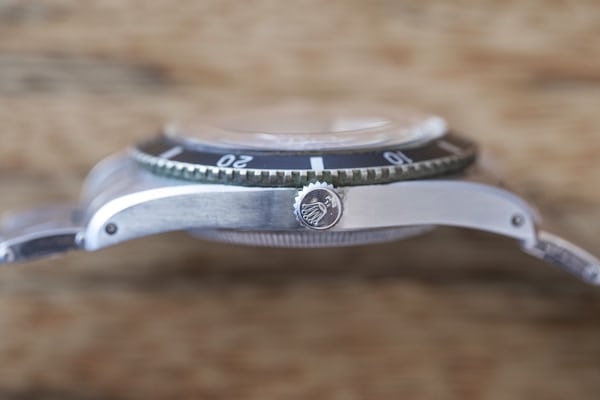
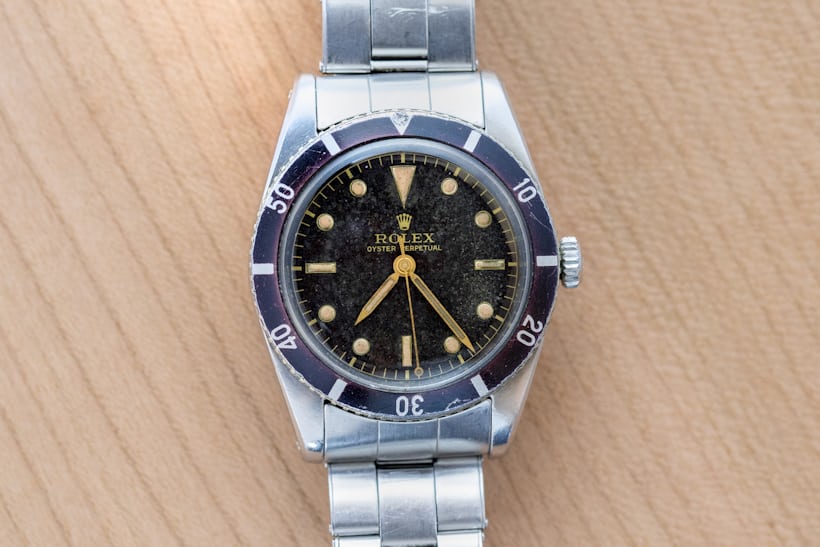
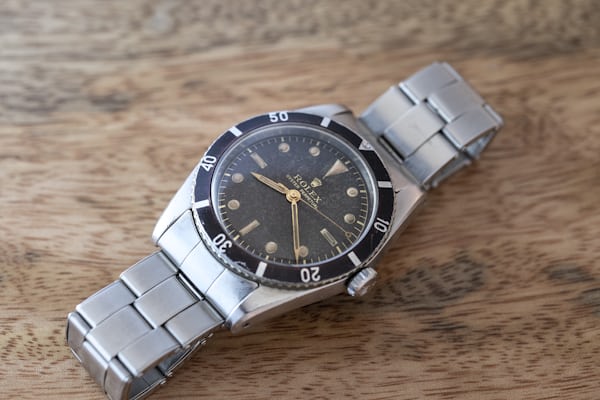 .
. 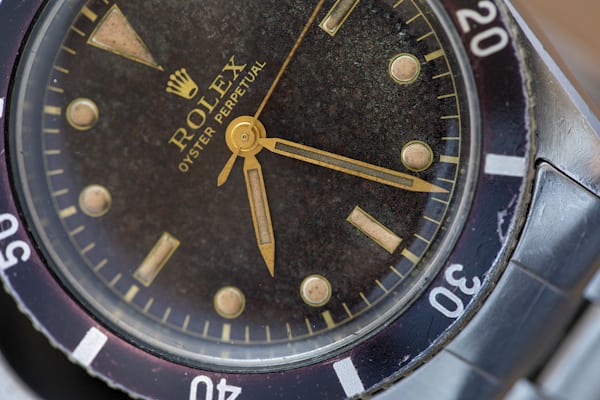
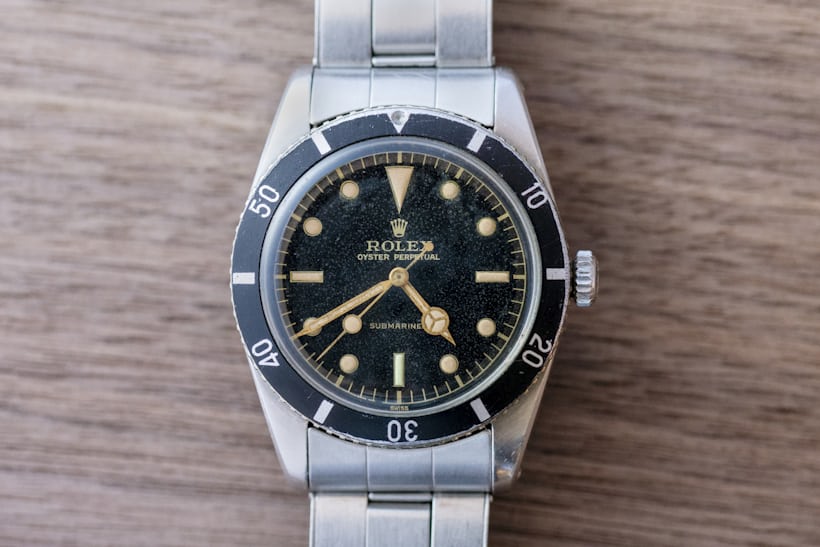
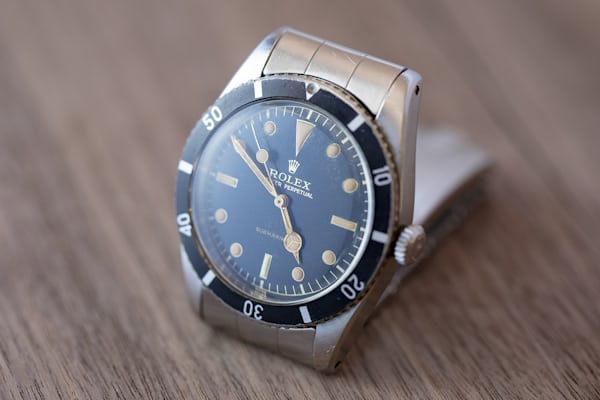 .
. 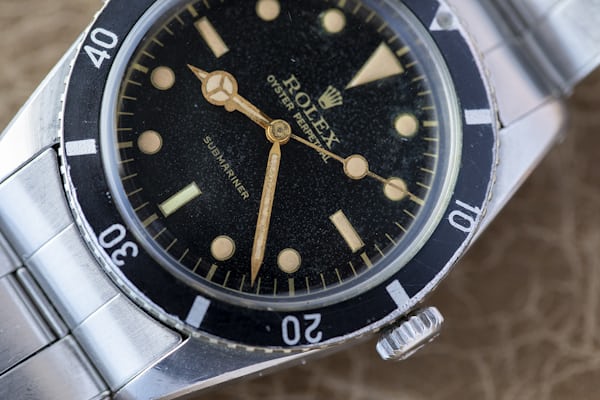


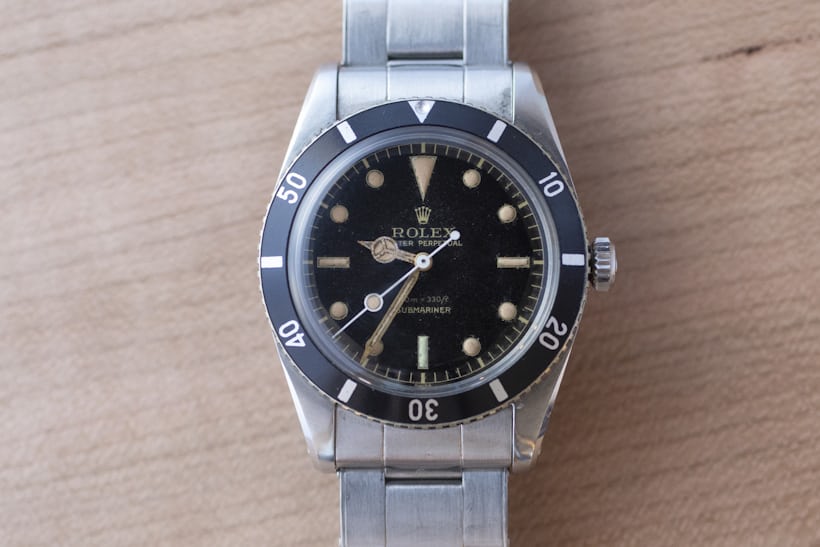
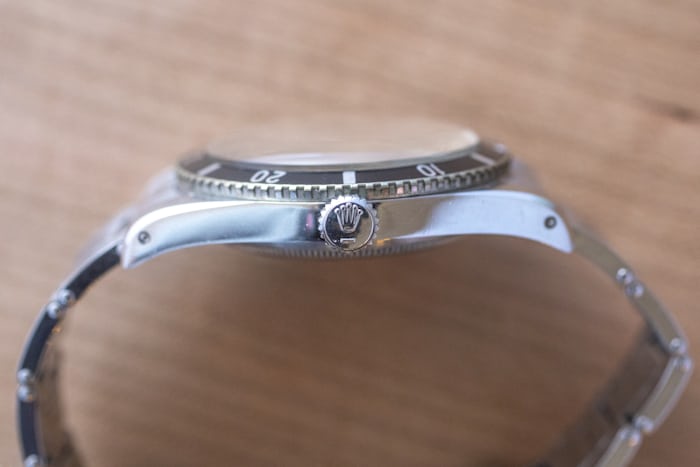
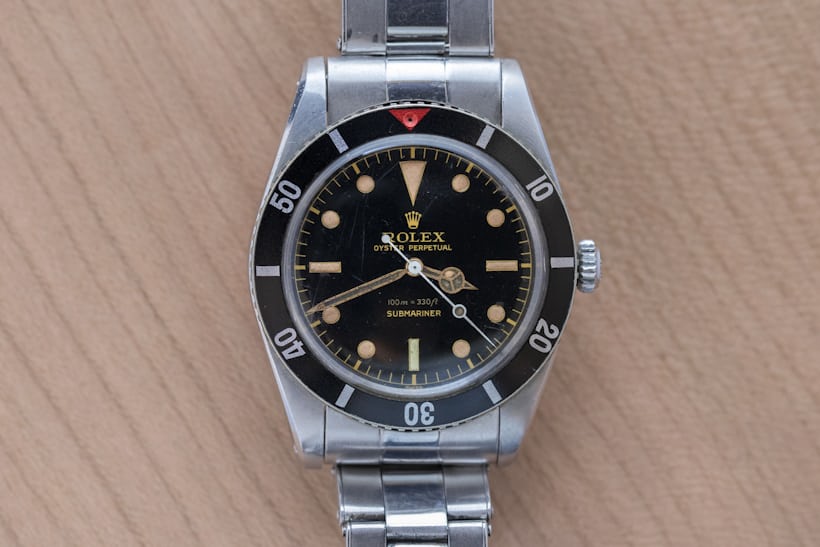
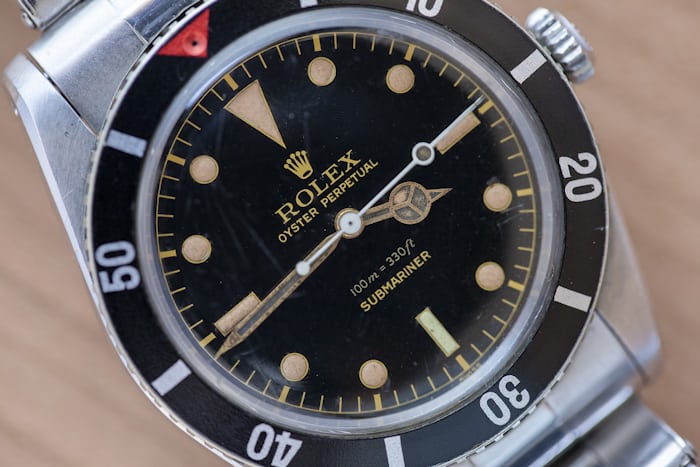

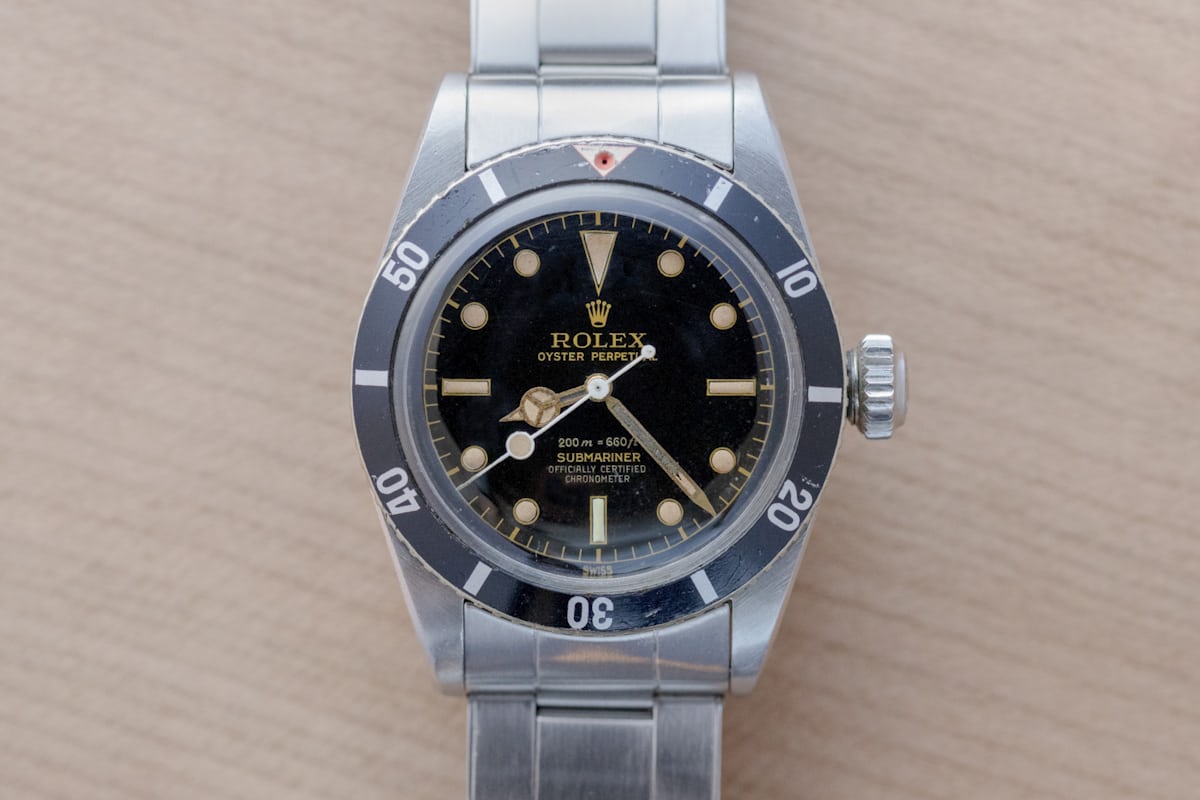
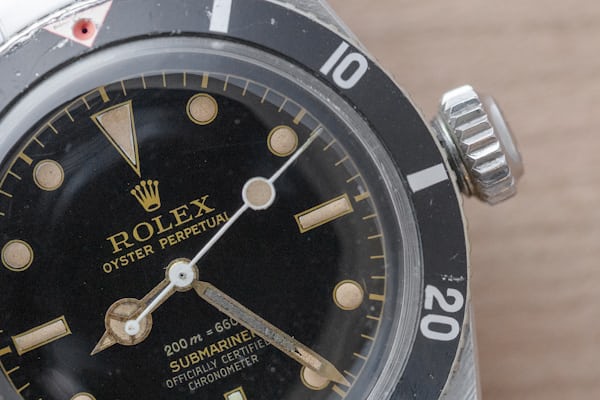 .
. 
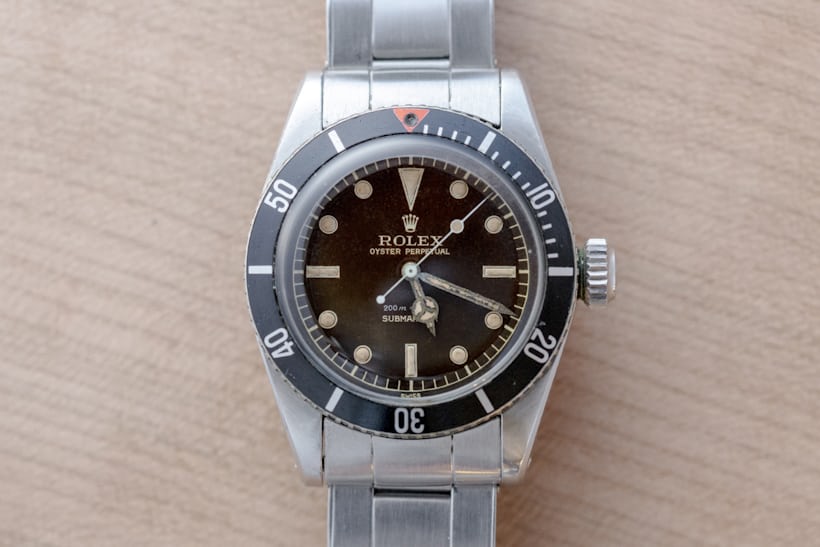
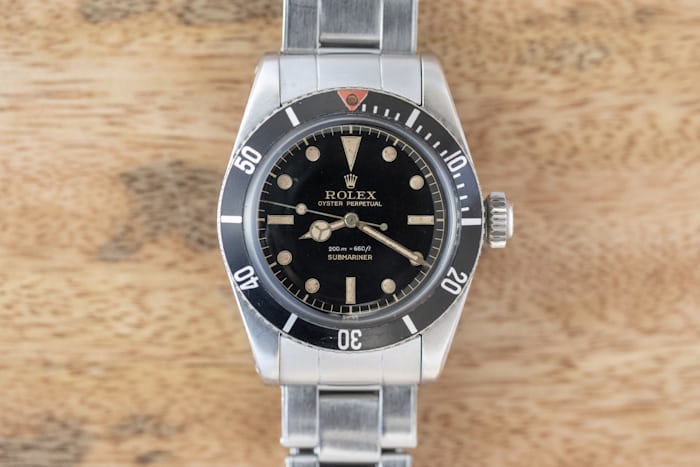
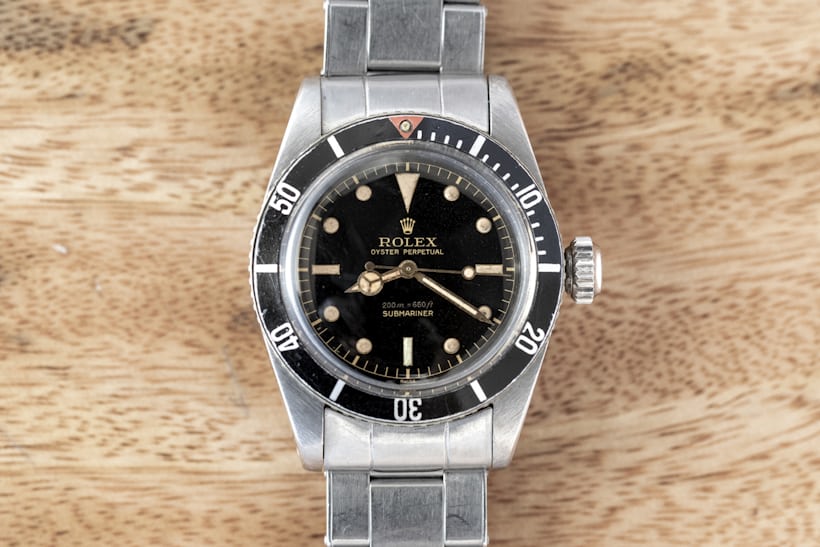
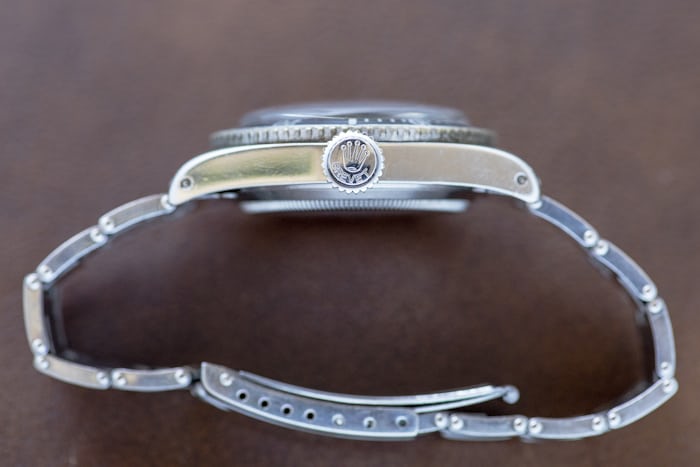
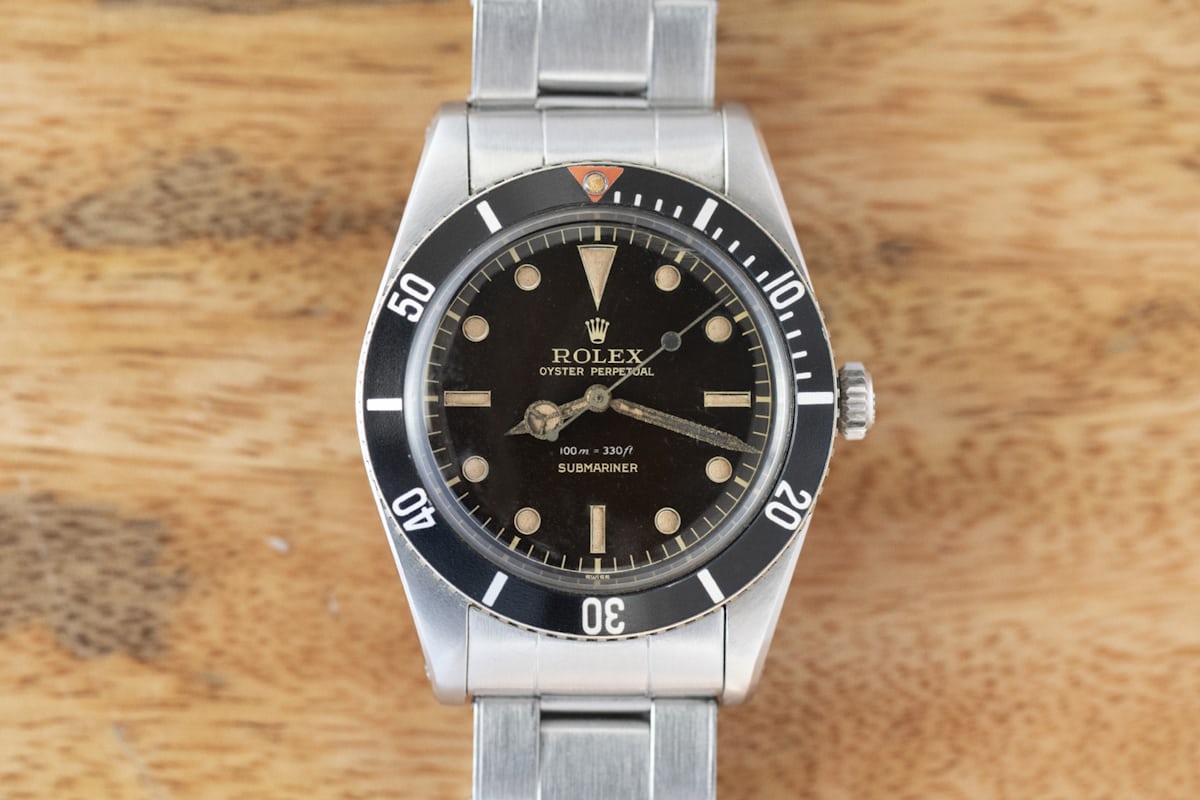
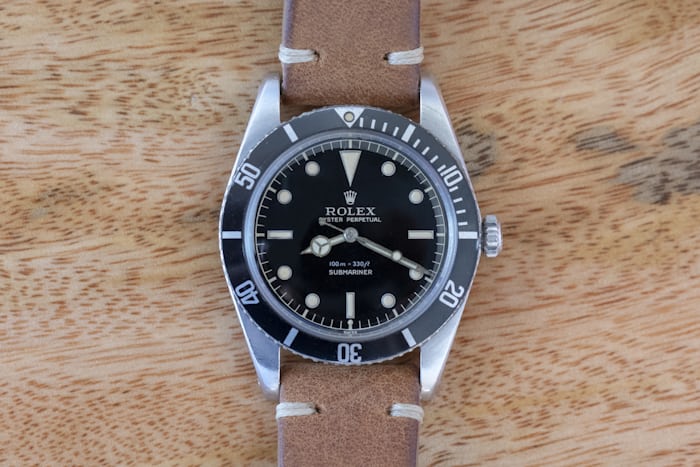
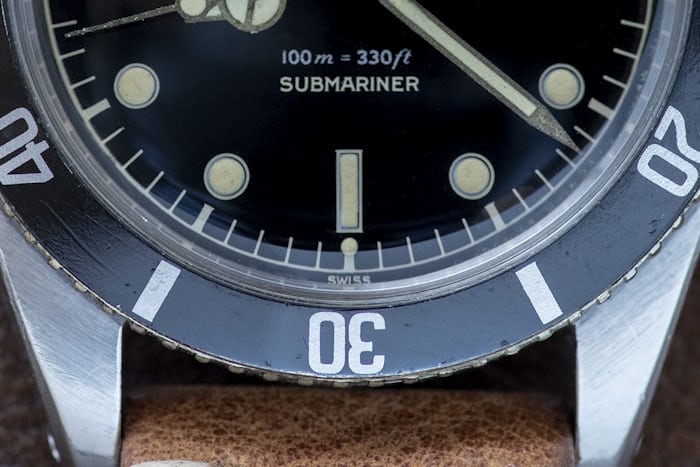
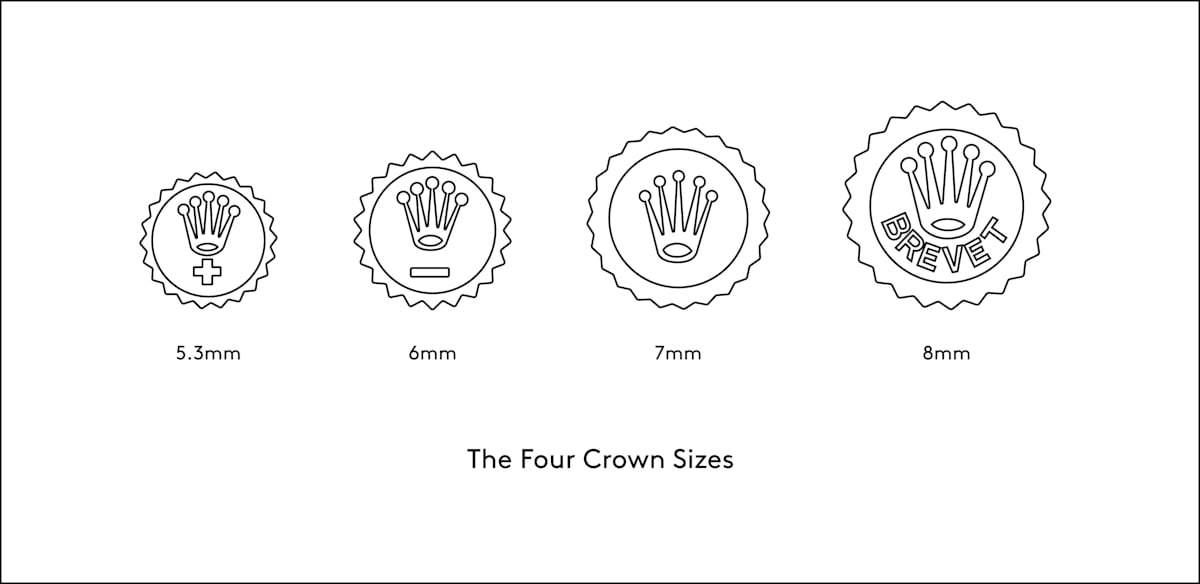
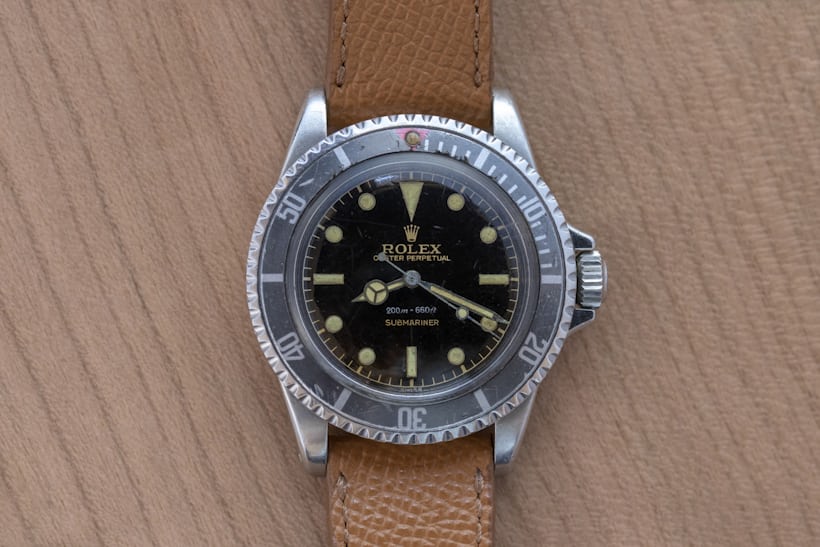
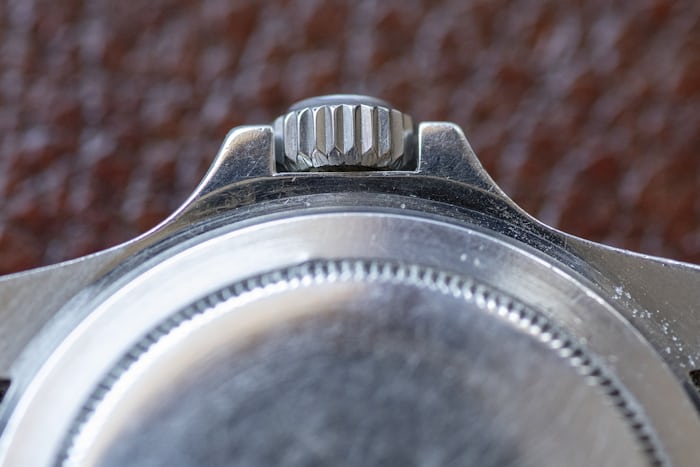
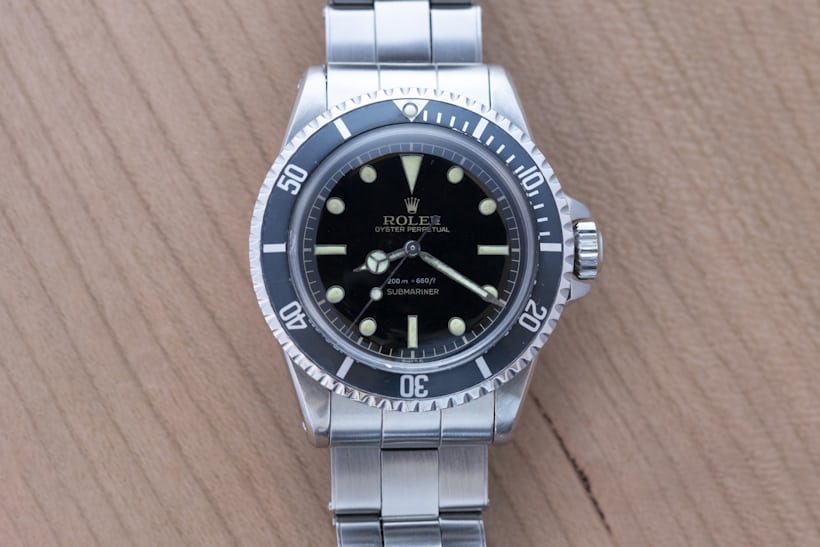


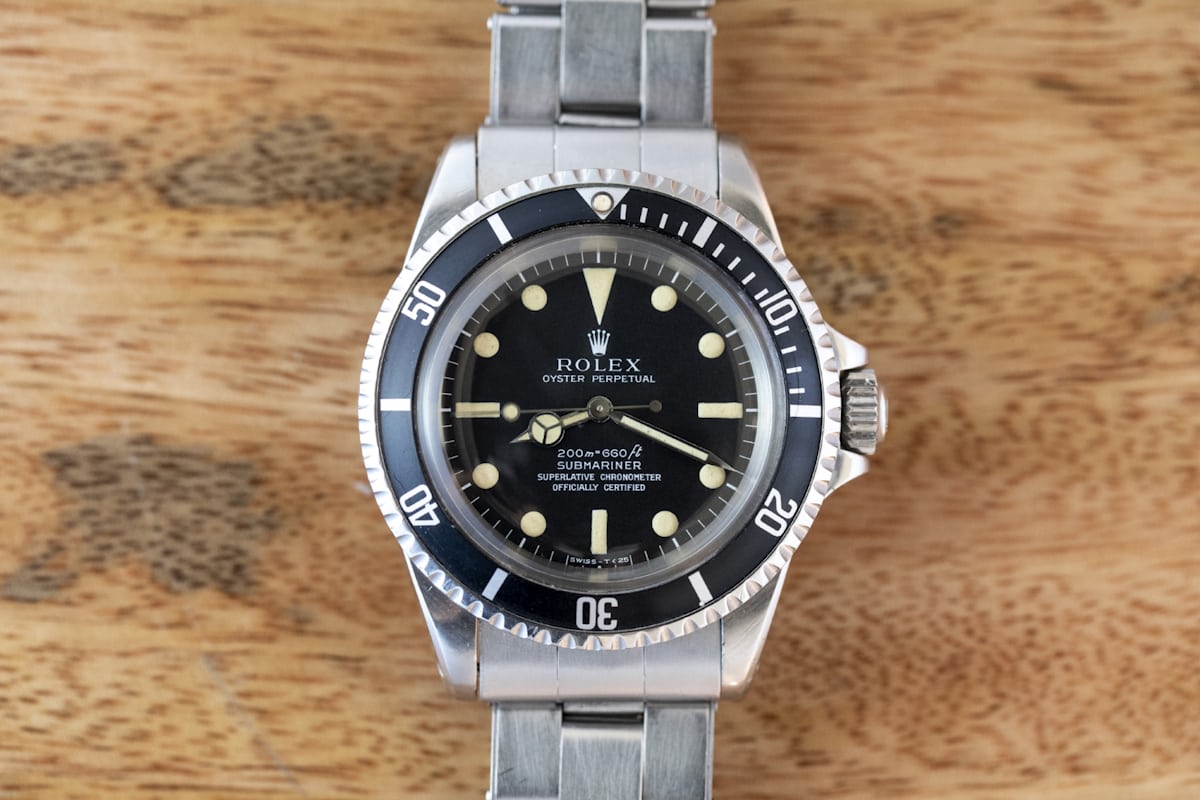
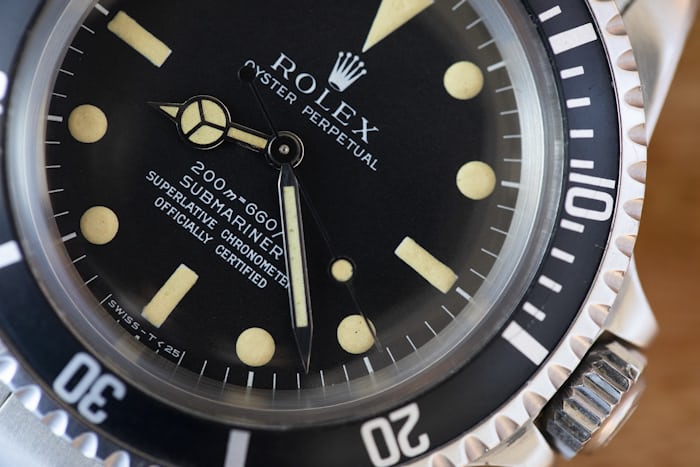
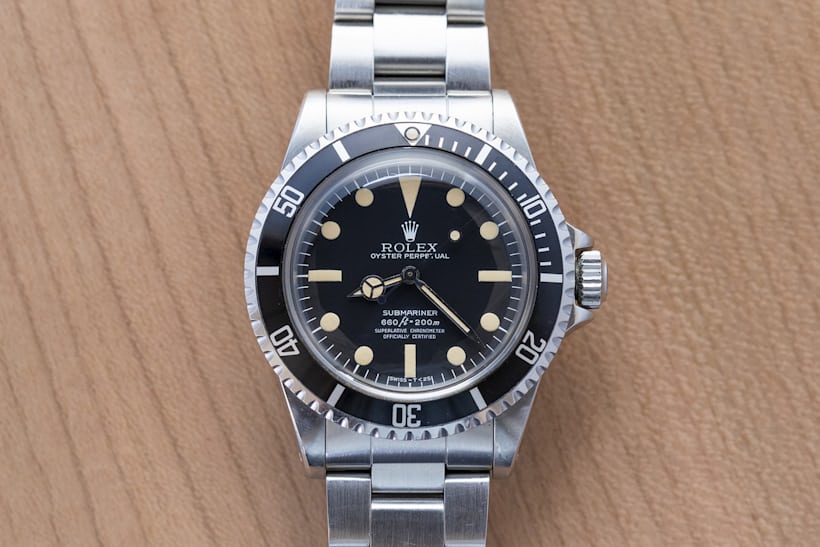

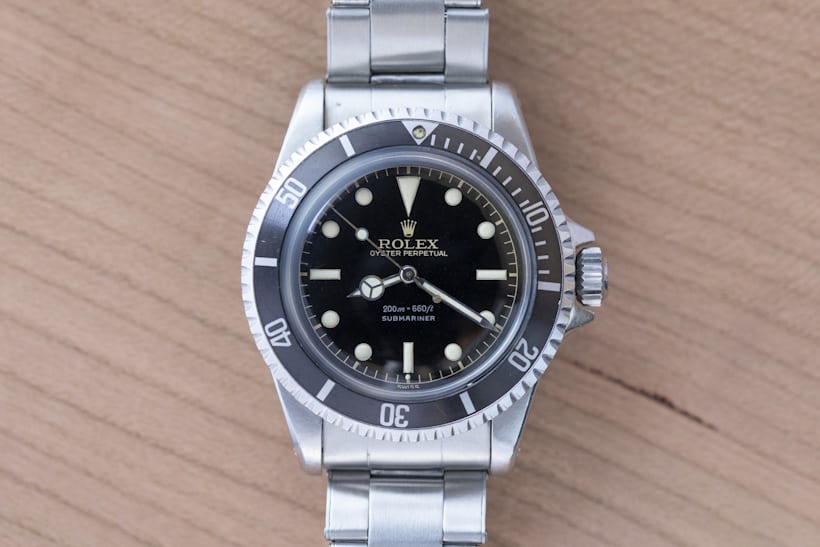
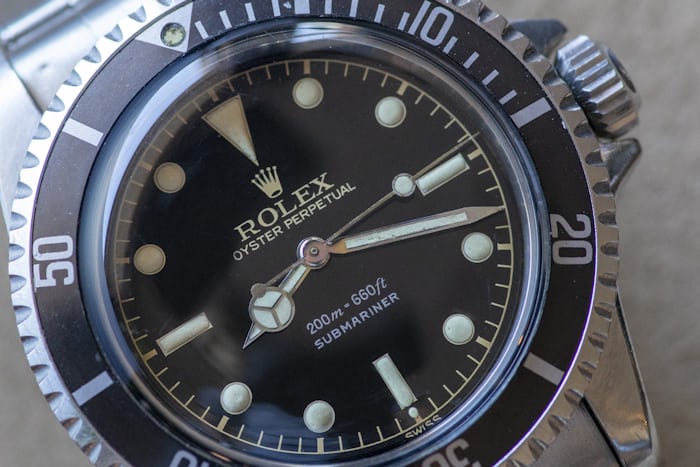
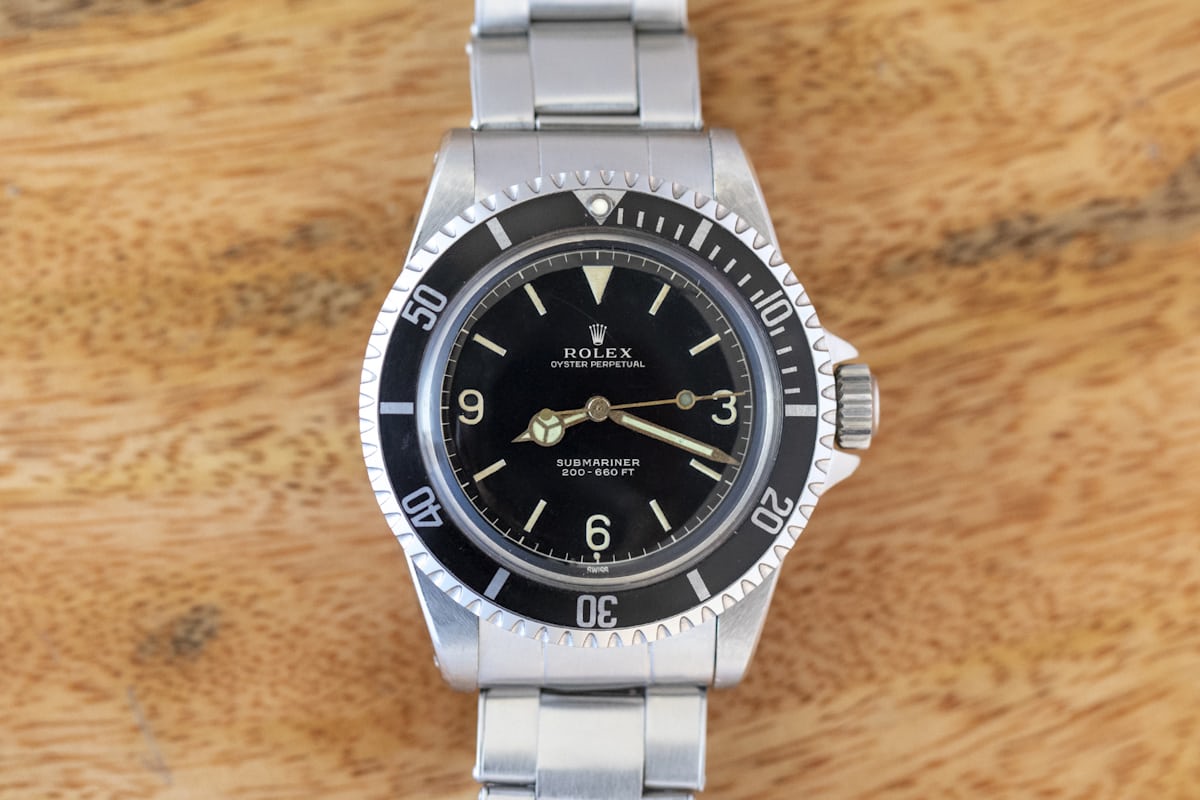
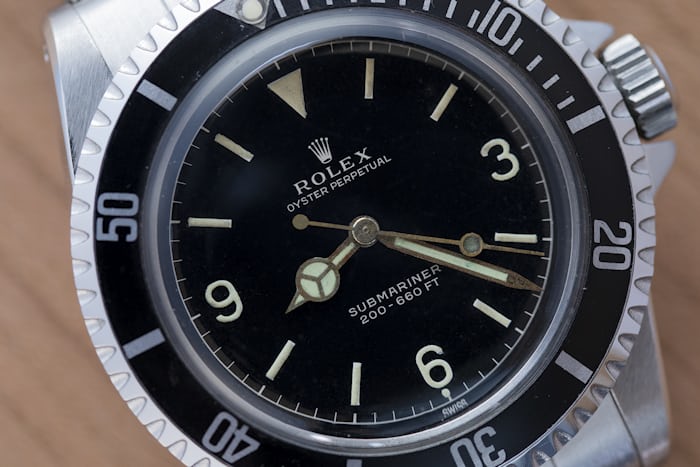
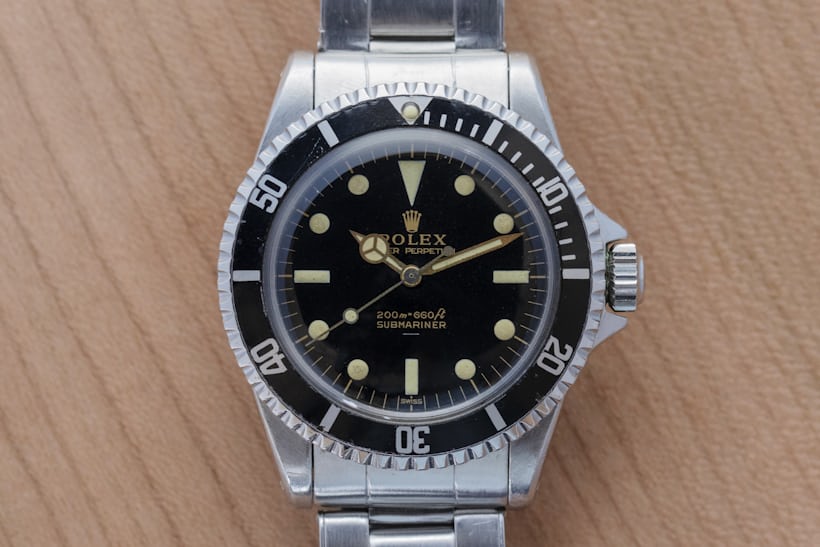
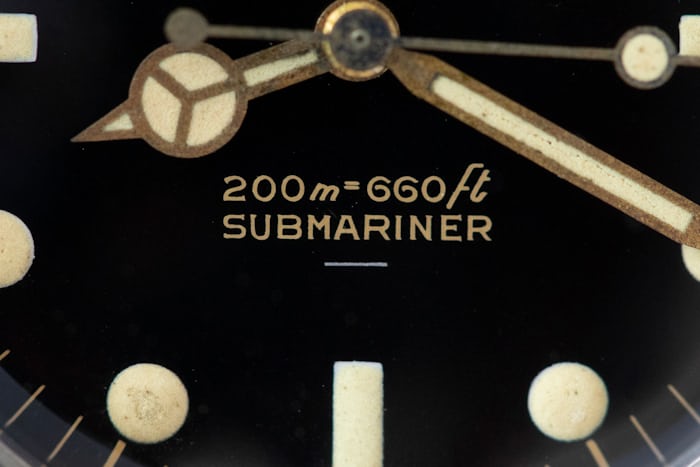

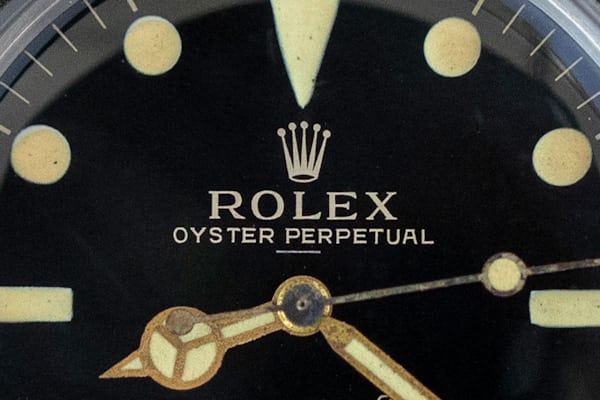 .
. 